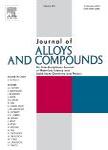版权所有:内蒙古大学图书馆 技术提供:维普资讯• 智图
内蒙古自治区呼和浩特市赛罕区大学西街235号 邮编: 010021

作者机构:College of Materials Science and Metallurgical Engineering Guizhou University Guiyang 550025 China Guizhou Key Laboratory for Mechanical Behavior and Microstructure of Materials Guiyang 550025 China National & Local Joint Engineering Laboratory for High-performance Metal Structure Material and Advanced Manufacturing Technology Guiyang 550025 China The First Sub-Institute Nuclear Power Institute of China Chengdu 610005 China State Key Laboratory of Nuclear Reactor Technology Nuclear Power Institute of China Chengdu 610041 China
出 版 物:《Journal of Alloys and Compounds》
年 卷 期:2025年第1036卷
摘 要:U 3 Si 2 is a promising accident-tolerant fuel (ATF) candidate due to its high thermal conductivity, high uranium density, and resistance to fission gas swelling. However, the behavior of xenon (Xe), a dominant fission gas product in U 3 Si 2 fuel, remains not fully understood. Using first-principles calculations, this study systematically investigates the dissolution, accumulation, and diffusion of Xe in U 3 Si 2 . Our results show that Xe has very low solubility in interstitial sites due to steric constraints and preferentially occupies vacancy defects, which provide larger space. While monovacancies have limited capacity to retain Xe, larger vacancy clusters facilitate Xe accumulation through favorable binding interactions. Diffusion analysis reveals marked anisotropy in Xe behavior, with interstitial migration barriers much higher than those for pathways mediated by vacancies. This indicates severely restricted Xe mobility in defect-free lattices. These findings explain the experimentally observed suppression of gaseous swelling: Xe bubble formation and growth in U 3 Si 2 depend on pre-existing defects rather than spontaneous nucleation. This study provides critical atomic-scale insights into Xe behaviors, supporting the potential of U 3 Si 2 as an advanced nuclear fuel material.